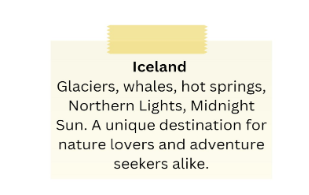29 CÂU HỎI
Mark the letter A, B, C, or D on your answer sheet to indicate the word that has the underlined part pronounced differently from the others.
A. handicraft
B. adopt
C. apart
D. adapt
Mark the letter A, B, C, or D on your answer sheet to indicate the word that has the underlined part pronounced differently from the others.
A. foot
B. boots
C. look
D. book
Mark the letter A, B, C, or D on your answer sheet to indicate the word that has a stress pattern different from the others.
A. advice
B. career
C. computing
D. payment
Mark the letter A, B, C, or D on your answer sheet to indicate the word that has a stress pattern different from the others.
A. obvious
B. patterned
C. amazing
D. social
Mark the letter A, B, C, or D on your answer sheet to indicate the correct answer to each of the following questions.
______, the movie is fully booked and we can't get tickets anymore.
A. Unfortunately
B. Happily
C. Luckily
D. Sadness
While Mary ______ in the garden, her husband ______ her.
A. was working/ called
B. work/ called
C. worked/ calling
D. was working/ calls
50 years ago, only a few people ______ computers, but most of them were very large.
A. can afford
B. cannot afford
C. could not afford
D. could afford
Social media and online gaming are some of the recent trends ______ teenagers.
A. about
B. for
C. at
D. from
Their children have been learning Chinese ______ 5 years ago.
A. since
B. for
C. from
D. in
I have ______ finished my homework.
A. yet
B. just
C. still
D. already
We haven't met before, ______?
A. haven't we
B. had we
C. have we
D. hadn't we
There are ______ people at the beach today. It’s summer time.
A. a little
B. few
C. enough
D. a lot of
The man ______ came here yesterday is my teacher.
A. who
B. that
C. whom
D. what
My mother and my sister talked ______ than the other guests.
A. more loudly
B. loudlier
C. louder
D. more loudlier
James learnt cooking ______ he wouldn’t eat out every day.
A. in order to
B. in order that
C. so as to
D. so as not to
“What's your go-to outfit for a first date?” – “______”
A. I like our outfit too.
B. I usually wear something casual but nice.
C. For a first date, I’m always on time.
D. I don’t mind changing clothes.
Look at each symbol or advertisement. Choose the best answer (A, B, C, or D) that matches its meaning.
What does the cosmetic jar symbol mean?

A. Only use after 12 minutes.
B. Do not use it for more than 12 minutes.
C. Use for at least a year after opening.
D. Use within a year after opening.
What is true about the Iceland advertisement?

A. It includes attractions such as glaciers, whales, hot springs, and the Northern Lights.
B. It showcases skyscrapers and bustling city life.
C. It is exclusively for adventure seekers.
D. It emphasizes tropical beaches and sunbathing.
Clothing is a big part of how a teen (30) ______ himself or herself and shows his or her style.
A. expresses
B. communicates
C. thinks
D. believes
Teenagers choose what to wear (31) ______ on both their personal style and how comfortable it is
A. played
B. made
C. based
D. found
Teenagers can also be (32) ______ by the pressure to fit in with certain beauty standards and fashion trends
A. thought
B. touched
C. influenced
D. impressed
Instead, they should dress in a way that makes them feel (33) ______ and comfortable.
A. self-confidence
B. confidence
C. confidently
D. confident
Teenagers can make good decisions about what to wear by embracing their uniqueness and putting comfort and (34) ______ values first.
A. familiar
B. different
C. similar
D. personal
Sign languages use hand gestures, body movements, and facial expressions to communicate.
A. False
B. True
Sign languages have their own grammar, syntax, and vocabulary, just like spoken languages.
A. True
B. False
Sign languages are universally the same and do not differ from country to country.
A. False
B. True
Sign languages are not used by millions of people worldwide, including the deaf community and people with hearing impairments.
A. False
B. True
What is the main characteristic of sign languages?
A. They use hand gestures, body movements, and facial expressions
B. They have no grammar or syntax
C. They are universally the same
D. They are primarily auditory languages
What is true about sign languages?
A. They are solely used for communication, not cultural expression
B. They have no unique grammar, syntax, or vocabulary
C. They are not used by millions of people worldwide
D. They are recognized as official languages in many countries
